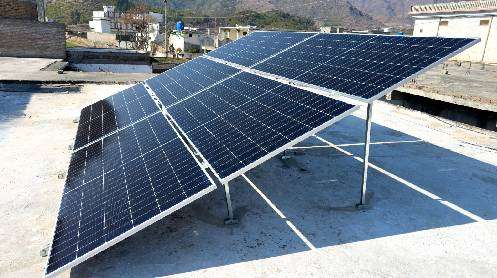LITTLETON: Solar electricity production in Europe during the first quarter of 2025 was up by over 30% from the same months in 2024, setting the stage for full-year record performance from the region’s solar farms.
Total solar electricity generation over the January to March period was nearly 68 terawatt hours (TWh), data from Ember shows, which was 32% more than the same period a year ago.
Solar assets accounted for 8.2% of Europe’s utility-supplied electricity in March, up from 6% in the same month a year ago, which indicates that solar power is rapidly emerging as a key electricity source for regional utilities even in winter.
As Europe’s peak solar production period occurs during the northern hemisphere summer, total solar output and electricity share will grow further in the coming months, ensuring continued strong momentum for regional energy transition efforts.
Clean drive
The rise in European solar production is part of a broader push to reduce dependence on fossil fuels and increase electricity production from clean energy sources, which accounted for a record 61.3% of Europe’s electricity in 2024.
During the first quarter of 2025, Europe’s clean share of production dropped to 57% due to low wind speeds at turbine level, which triggered a 15% drop in wind power output from the same quarter in 2024.
As wind farms are Europe’s third-largest source of clean power (after nuclear plants and hydro dams) utilities were forced to boost output from gas and coal plants so far this year to balance system needs.
Going forward, however, clean power’s share of the overall generation mix looks set to recover as output from fossil fuel plants drops off due to reduced power demand for heating, and as solar farms reach their peak production period.
Wide spread
Up until around 2010, Germany and Spain accounted for over 80% of all of Europe’s solar generation capacity.
But due to steep cost drops and increases in solar system efficiency levels, several other countries have rapidly increased their solar capacity over the past decade or so.
US finalises tariffs on Southeast Asian solar imports
As a result, Europe’s solar farms are now spread throughout the continent, with multiple countries posting double-digit growth rates in recent years.
During the first quarter of 2025, several countries posted larger solar output gains than the regional average, including Turkey (+54%), the Netherlands (+63%), Poland (+44) and Switzerland (+43%) compared to the first quarter of 2024.
What’s more, Germany, Greece, the Netherlands and Spain all also registered solar electricity shares of more than 10% during the opening quarter of the year, which underscores the growing clout of the solar sector within Europe’s generation mix.
Those share levels will likely more than double during the coming months as solar radiation levels peak and daylight hours lengthen over the summer.
Greece, Germany, the Netherlands, Portugal and Spain will all likely generate over 25% of their total electricity from solar during June, July and August, which should help boost the average for Europe as a whole to around 14% during those months.
Italy, Bulgaria, Croatia and Turkiye will also likely register double digit solar electricity supply shares this summer, ensuring that nearly every major regional economy registers record deployment of solar for electricity in 2025.
The opinions expressed here are those of the author, a market analyst for Reuters.







